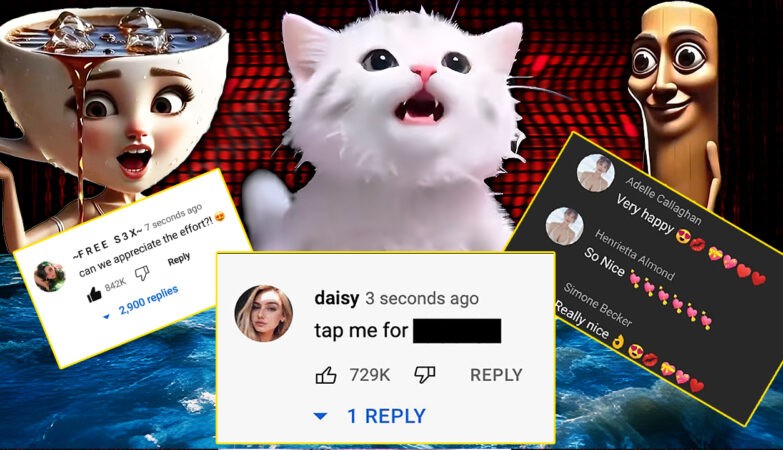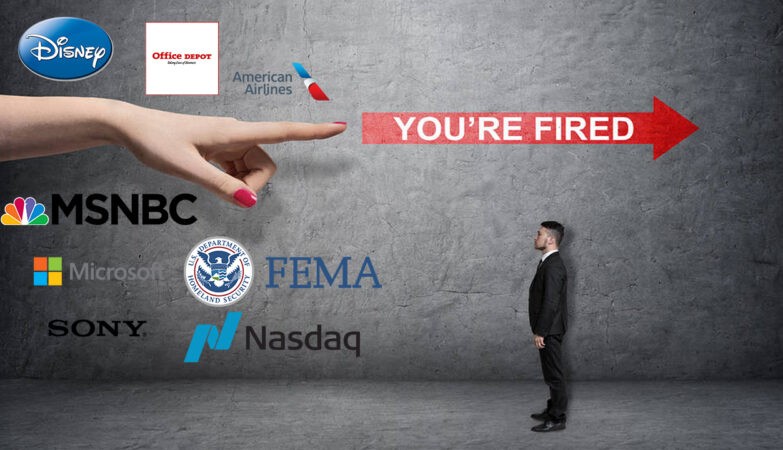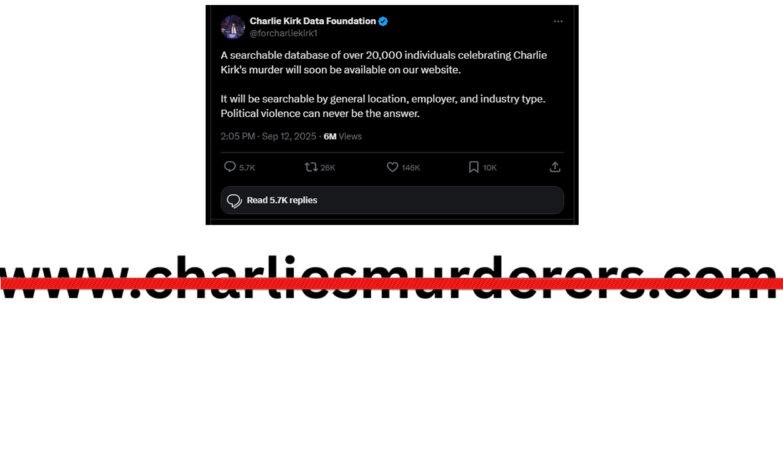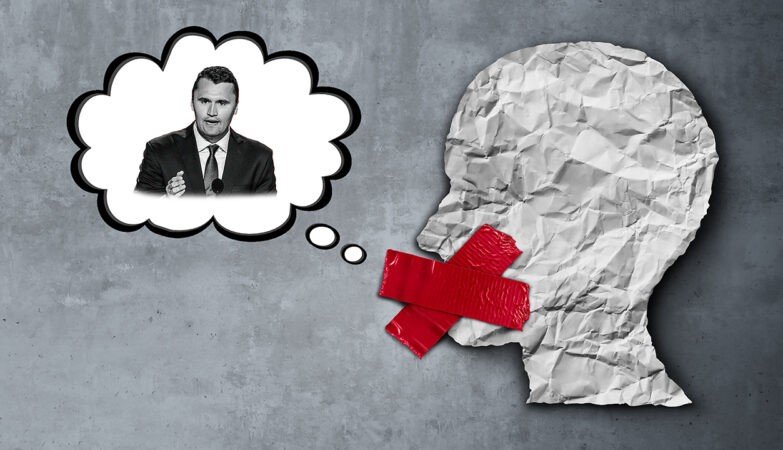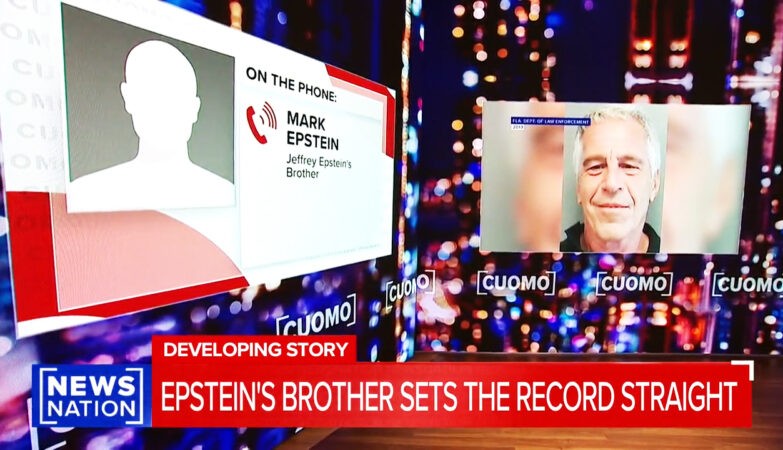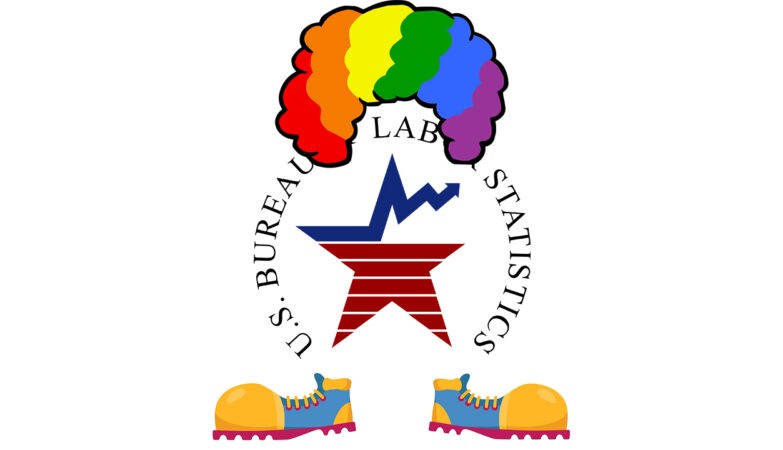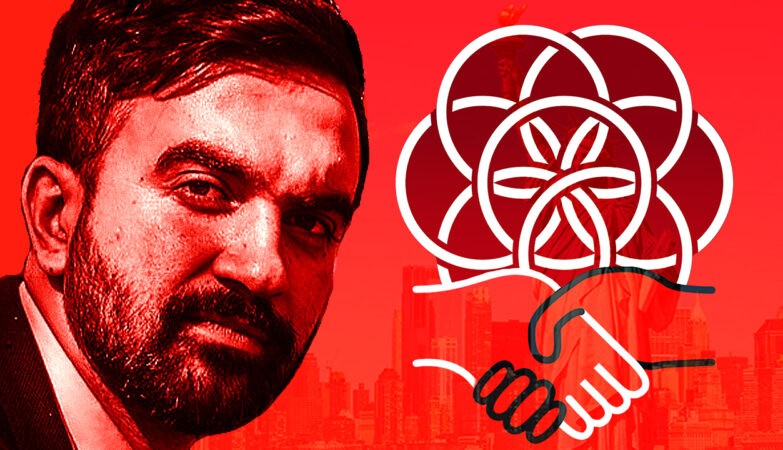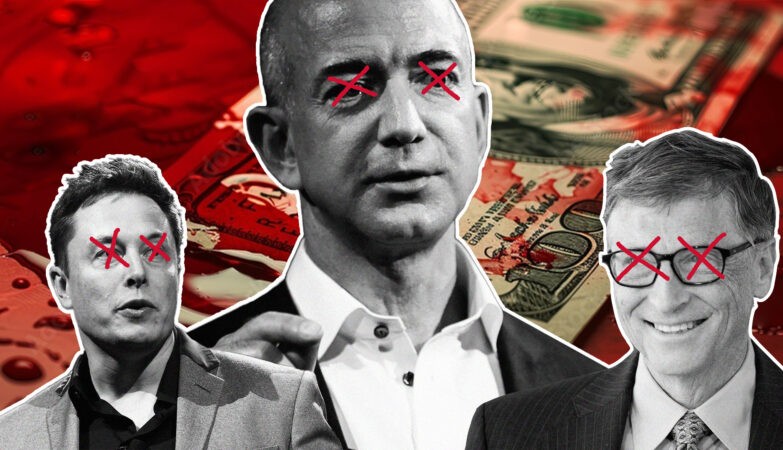While talking about the relevance of the two types of media to businesses and their advertising efforts, it is almost impossible to not wax philosophical about the dichotomy of mainstream media and alternative media. It is important, however, to understand the philosophical motivations behind the differences between the two, at least before choosing which one of them can be used to advertise your business effectively.
Theoretically, the role of the media in a democratic society is to provide objective, factual information and editorial opinions for readers, viewers, and listeners, people who are collectively referred to as media consumers. At one time, the majority of news stories on radio, television, or in print emphasized the presentation of objective facts about an event, an issue, or some other particular subject. In recent years, however, the balance between fact and opinion has made a significant shift away from objective facts and towards more opinionated reporting.
This is true in all forms of media, including traditional media and new media outlets. As one CBS executive put it, “Opinion has begun to drive out fact-based reporting” (O’Connor). A media consumer might expect an independent or alternative media outlet to spin their reports in the direction of their target audience or their position on a specific issue. This same type of intentional bias, however, is no longer restricted to alternative media, but may now be found in supposedly fact-based news reports from mainstream media outlets.
When trying to determine whether a story from a specific media outlet is accurate, media consumers must consider the source at least as much as they must consider the information. Types of today’s media can be divided into two broad categories, mainstream media and alternative media. Mainstream media outlets, also known as commercial media outlets, are businesses that are driven by the same profit motives as any other business. If these businesses do not turn a profit or meet the expectations of shareholders, they will fail.
What Is Mainstream Media?
The term “mainstream media” is used almost every day in public discourse. In fact, it is so common that it has its own abbreviation: MSM. Given the existing trend in which alternative media sources and mainstream media sources are in a constant tug of war, people will continue to hear about mainstream media for a long time to come. It is now a firm part of the American way of life.
As the name suggests, mainstream media is everywhere, and encompasses television, print, radio and certainly the internet, in the form of online publications. For the most part, in the U.S., mainstream media can be traced to a few conglomerates that own a majority of television networks, newspapers, magazines and even major movie houses.
Critics of mainstream or commercial media claim that the purpose of mainstream media is not to inform people, but to attract as broad of a cross-section of media consumers as possible and to put their audience in a mood to buy their advertisers’ products (Netanel 7). Mainstream media stories become even more generic when commercial media outlets use stories from the same sources, usually the Associated Press, although other sources are also used when it is appropriate to do so.
In contrast, alternative media is not necessarily intended for commercial purposes, although some alternative media sources do rely on advertising or the sale of merchandise as a source of revenue. While the goal of mainstream media is to hit as wide of a market as possible, alternative media sources tend to be more tightly focused on specific groups with specific interests and goals. Alternative media is often driven by specific political agendas.
Alternative media sources tend to report stories that are consistent with their agenda and tend to downplay or ignore stories that are not consistent with their perspective. Ultimately, commercial media and alternative media are probably about equally biased in their perspectives and their reporting. The importance difference is that alternative media sources tend to wear their biases as a badge of honor, while mainstream media sources continue to insist that they are objective and balanced in their coverage, despite all evidence to the contrary.
Some examples:
General Electric, which owns at least 27 television stations in the United States alone. It owns such stations as NBC, Telemundo, A&E, the Sci-Fi channel and the streaming site Hulu.
The Walt Disney Company owns the ABC television networks, which in turn have more than 200 affiliate networks in just about every U.S. TV market.
Viacom and CBS used to be part of the same company but split from each other in 2005. What’s even more interesting is that they are both owned by the same holding company: National Amusements, which is owned by Sumner Redstone. Viacom owns Comedy Central, Nickelodeon, VH1, MTV and many other stations. CBS on its own has a viewership of more than 100 million homes, making it the most watched network in the U.S.
Rupert Murdoch owns the News Corporation, which happens to be the largest media empire in the world when it comes to market capitalization; its market capitalization is in the tens of billions of dollars. Through the News Corporation, Murdoch owns FOX, the National Geographic Channel, the TV Guide Network, part of Hulu alongside General Electric, and MySpace.
Time Warner Cable is the proud owner of CNN Headline News, Cartoon Network and Turner Classic Movies.
These companies collectively own a majority of the popular media in the country and, by extension, the world. At the heart of it, mainstream media consists of a handful of companies that own the most popular media networks and, as a result, command the most views. MSM also includes such publications as the New York Times and the Washington Post, along with foreign networks like the BBC and Sky, among others.
Together, these networks and publications cater to the majority of the population. They control what most people hear, see and read. For this reason, a lot of dissenters have likened them to puppeteers and questioned their impartiality in delivering the truth.
The fact remains, however, that mainstream media is called mainstream for one major reason: It commands the largest viewership. Any form of media that has the lion’s share of viewership can legitimately be called mainstream media. In fact, many mainstream media houses, like FOX, started out as forms of alternative media. However, their growing viewership led to them eventually being dubbed mainstream.
Media bias reflects the biases and positions of media ownership. In some cases, it is relatively easy to tell who owns a particular media outlet and to predict what the ownership’s perspective might be on a particular issue. For example, Al-Jazeera is an Arabic news service that is owned by the Emir of Qatar. While Al-Jazeera may be considered by Americans to be an alternative media outlet, it has become a mainstream media source for millions of Arabs.
The ownership of Al-Jazeera is reflected in the network’s choice of which stories that are aired on its satellite television service and on the Al-Jazeera Internet website (Funnell), which have included statements by Osama bin-Laden, beheadings of Western hostages, and some reports that have been critical of the governments of some of the governments in the Arab world. Even if the media consumer is unaware that the Emir of Qatar owns Al-Jazeera, the organization’s name is a clear indication of the Arabic and Muslim roots of the network’s ownership.
Al-Jazeera’s perspective on the war in Iraq and other issues is naturally different from the perspective that readers would expect to find from Western media sources. Other media outlets also use names that clearly reflect their particular editorial or political perspectives as a way of attracting the attention of readers who are looking for certain types of content. Adbusters.org, as the name implies, opposes the corporate consumer culture that is promoted by almost all other media outlets. There is no advertising on the Adbusters.org website, although there is an online store that sells Adbusters branded merchandise.
Another website, Newsbusters.org, claims to track liberal bias in the mainstream news media. A review of the Newsbusters.org website, however, reveals a bias towards conservative political ideology. The viewpoints behind RightWingNews.com and Progressive.org are clear from the titles of the publications and the content on their respective websites. Other websites, magazines, and radio and television programs have names that are designed to make their editorial perspective clear.
The forces behind other media outlets may not be as obvious but can still be determined with a little bit of research. The political perspective behind HuffingtonPost.com may not be clear from the title of the website, but it is clear that the site is owned and operated by Arianna Huffington, a popular progressive commentator and author of several books. MichelleMalkin.com, is shaped by the political and social views of Michelle Malkin, a conservative commentator with a website that is primarily a collection of links to other conservative content. Some alternative media outlets have more obscure names.
In most cases, the editorial perspective of a particular website or publication is reflected in the content that they choose to carry. It is more difficult to determine the ownership of mainstream media outlets, although it is safe to say that virtually all mainstream media outlets are owned by a handful of very large corporations. While alternative media is characterized by diversity and highly specific target audiences, mainstream media is characterized by just the opposite: an extreme lack of diversity and conglomerations that include multiple forms of media under a single umbrella.
These media giants are General Electric, with total revenues of $163.4 billion in 2006; TimeWarner, with $44.2 billion in revenue in 2006; Walt Disney, $34.3 billion; NewsCorp. , $25.3 billion; and CBS, with revenues of $14.3 billion in 2006 (Free Press). General Electric controls NBC and 26 separate television stations, along with several other outlets; Time Warner controls CNN and other outlets and provides cable service to 17.9% of all cable subscribers; Walt Disney controls the ABC Television Network and several other cable networks and 227 radio stations; NewsCorp. is home to Fox News and other networks, The Wall Street Journal, and over 200 television stations in major markets; CBS operates several media outlets under the CBS banner and owns 27 television stations and 140 radio stations; and Viacom also has a strong media presence, although primarily in entertainment and not as a news source (Free Press). Just like Al-Jareeza, HuffingtonPost, and other independent media sources, the interests of the corporate owners of mainstream media outlets are often reflected in the content that their stations, newspapers, and websites decide to air and in the editorial spin of their news stories.
A survey conducted in 2007 found that 30% of Americans believed that the Associated Press had a “liberal bias” while 12% believed that the Associated Press tended to have a conservative bias (Morrissey). By comparison, 29% of Americans surveyed felt that CNN had a liberal bias, while 37% believed that The New York Times was biased in favor of liberal policies. The poll also found that the perception of bias goes both ways: 34% of those surveyed indicated that they believed that Fox News had a conservative bias (Morrissey).
Example: First Quarter Economic Report Differences between alternative media and mainstream media can be found on almost any topic. Recent articles about the state of the American economy provide a good example of how media outlets spin news to fit their specific agenda. Political arguments about the economy have a long history in the United States. In general, the conservative Republican party tends to favor the economic interests of American businesses, including free markets, less government regulation, and tax breaks for corporations.
Progressives, which includes most Democrats, tend to favor greater government control of business, including more government regulation, higher wages and benefits, and fewer economic incentives such as tax breaks for businesses. Economic news is even more politicized in 2008 because it is an election year and the economy is an important issue for many Americans. Bad economic news would probably help Democratic candidates for Congress and the eventual Democratic nominee for President. Conversely, bad economic news during the election cycle would tend to be bad for Republican candidates, including John McCain. On 30 April 2008, the U.S. government released its economic data for the first quarter of 2008, which indicated that the American economy grew at an annual rate of 0.6 percent, which was better than forecasters had predicted (Bureau of Economic Analysis).
According to the government reports, this was good news because it meant that despite rising inflation and a devalued dollar, the United States was not actually in a recession. This report was especially good news for John McCain and other Republican candidates. Both Barak Obama and Hillary Clinton, along with their political allies, had been emphasizing that the economy was in a recession.
Not surprisingly, conservative news outlets put the news in a positive light, referring to “the recession that wasn’t” (Pethokoukis). The Wall Street Journal also put a positive spin on the story, emphasizing the increases in productivity and rebounds in the stock market. In its coverage of the same economic report, the Associated Press released a story with the headline: “Analysis: Good economic news something of a mirage” (Aversa, “Analysis…”). Since mainstream media outlets often same sources for news content, this Associated Press story appeared on the Internet websites of several mainstream media outlets.
In the “Analysis” story, Aversa claimed that although the most recent economic data indicates that the unemployment rate in the United States and the American trade deficit were both lower, people should not be fooled into believing that this means that the country has avoided a recession or that the recession is over. According to Aversa, while unemployment dropped by 0.1% between March and April, the number of people holding lower paying, part-time jobs increased dramatically.
Aversa also noted that productivity gains, heralded by the government as a sign that the economy was improving, were the result of reductions in the number of hours that workers worked, another indication of the shift from full-time to part-time employment in the workforce. Despite the increases in productivity, workers earned less in April than they did in March. The changes in the trade deficit were attributed to a reduction in the demand for gasoline, the result of the skyrocketing price of gasoline, while other imports remained relatively unchanged.
To someone who did not know the history of the Associated Press or the journalistic work of reporter Jeannine Aversa, this story might seem like an honest refutation of Bush administration’s continued denial about the recession and the attempt to put the best possible spin on the economic data. Fox News, which is considered to be more conservative than CNN and other television news networks, put a different spin on the same information. The story that appeared on Fox acknowledged that the economy had suffered, but concluded that “although the economy is stuck in a rut, it is still managing to grow, even if slightly” (Aversa, “Economy grows….“).
It is worth noting that the same Associated Press writer, Jeannine Aversa, wrote the “Analysis” story and the “Economy grows…” story. She simply adjusted her spin to fit the needs of the Fox Network. These changes illustrate how writers and media outlets can manipulate facts to fit the purposes of their agendas. Alternative media sources also addressed this same story, but with perspectives that were consistent with their agendas. Pajamas Media, a conservative website, observed that “Those who are rooting for the economy to go into a tailspin cannot be pleased” (Blumer).
Blumer concluded that the economy had not suffered as much as the Democrats and their allies had led the nation to believe. Blumer also focused on how the story had been handled by the mainstream media, with specific references to the “Analysis” story by Jeannine Aversa. Blumer’s article about how the economic data had been spun by Aversa and others illustrates another characteristic of alternative media. Alternative media sources devote a significant amount of time and space to questioning the authority of mainstream media outlets. For some alternative sites, like FAIR (which stands for Fairness and Accuracy in Reporting) and NewsBusters.org, the media is the topic of discussion.
Stories about topics like the war in Iraq, the economy, or other issues only serve to illustrate the primary point of bias in the mainstream media. However, it appears that many alternative media websites use at least part of their space to point out the differences between them and their mainstream counterparts. This may be for marketing purposes. Alternative media outlets must compete with mainstream media sources for readers and, in some cases, advertisers. Mainstream media has more money to spend on advertising than smaller alternative sources.
One way that alternative media can compete with mainstream media is by questioning their credibility and their motivation. Conclusion Before the rise of the Internet, people had limited choices as media consumers. The cost of publishing a newspaper or magazine or of operating a television or radio station prevented ordinary people from entering the media field. Consequently, mainstream media outlets were able to determine what stories would be told, how those stories would be presented, and how much attention would be given to a particular story before it was allowed to disappear from the public’s attention.
This gave mainstream media incredible power that developed into a sense of entitlement and superiority. Even today, despite the proliferation of Internet websites and other forms of alternative media outlets, many mainstream media sources continue to behave as if they believe that a story is not newsworthy unless they say it is newsworthy and that theirs is the only perspective that should be presented without a challenge. The Internet eliminated the barriers that had kept independent and alternative media sources from reaching the masses.
Today, alternative media is available on Internet websites, Podcasts, videos on YouTube. com, and in other forms. Many alternative media outlets, like DrudgeReport.com or Breitbart.com consist of little more than links to articles on other websites. However, even content aggregators like these still present a specific editorial perspective in their selection of which stories they will carry. For these sites, the media is the message. Other alternative media sources, like HuffingtonPost.com, present a mixture of original content and links to other stories.
Still others sites, like TheseTimes.com or Adbusters.com, have almost all original content. The rise of alternative media represents a revolution in information. Revolutions, however, tend to replace old power structures with new power structures that eventually become the new mainstream. As noted earlier in this article, Al-Jazeer was at one time an alternative media source that targeted the Arabic world. Today, Al-Jazeer has most of the characteristics of an established mainstream media outlet. Fox News was at one time considered an alternative media source.
Websites like HuffingtonPost.com, MichelleMalkin.com, have already begun to become institutions on the Internet with millions of regular readers and advertisers. CBS, NBC, and ABC all started as small, independent information networks that eventually grew into the established organizations that they are today. It is entirely possible that at some point in the near future, websites that are now thought of as part of alternative media will be considered part of the mainstream media establishment and will become the targets of criticism from new alternative media sources.
Ultimately, society may have to reconsider what it thinks of as “alternative media”. Netanel’s definition of commercial and mainstream media outlets as information sources that prepare consumers to buy products may not broad enough for media outlets in the future. All of the media outlets that were reviewed for this paper, including mainstream media outlets and alternative media websites, were selling something, either through advertising for sponsors or through an e-commerce portion of their websites.
The reality is that unless you are the Emir of Qatar and can afford to personally underwrite a media outlet to suit your specific political or social beliefs, media organizations require some type of income if they are going to survive. The real difference between mainstream and alternative media is not in their sources of income, but in how they allow that income to influence what they report.
The Independent/Citizen Journalists Are Winning
“I’m not going to let them bully me out of reporting,” said Tim Pool after recording an Antifa protest where angry activists cursed at him. There might have been violence, but Antifa’s “de-escalation team” protected him, he says.
That surprised John Stossel, American libertarian television personality, author, consumer journalist, and pundit, known for his career on both ABC News and Fox Business Network. “Antifa has a de-escalation team?” He asked Pool in one of his videos.
“They have people who try and make sure nobody from their side starts it—because cameras are rolling,” he answered.
Pool is part of the new media that now cover stories the mainstream media often miss.
John has become part of that new media, too. He may have still been working at Fox, most of his video views (117 million plus) at the time came from short videos he posted on YouTube, Facebook, Twitter, and Instagram.
Pool considers himself a man of the left. He supported Bernie Sanders and once worked for Vice. But now he often finds himself criticizing his fellow leftists.
“This really strange faction of people on the left are saying ridiculous things,” he said. “They’re helping Donald Trump.”
Trump probably did gain support when people watched street protests turn violent.
“Look at this protest in Portland,” recounts Pool. “A Bernie Sanders supporter showed up with an American flag—to protest fascists. What did Antifa do? Crack him over the head with a club.”
Pool won new followers with his coverage of the Washington, D.C., conflict between a Native American protestor and Covington, Kentucky, high school teens wearing Trump hats, including one who looked like he was smirking.
“All these big news outlets, even The Washington Post, CNN, they immediately made the assumption ‘He must be a racist sneering at this Native American man’,” says Pool. “I didn’t make that assumption…. I just see a guy banging a drum and a kid with a weird look on his face.”
Pool and Reason‘s Robby Soave were the rare journalists who bothered to examine more of the videos.
“The initial narrative that we heard from the activists was that this kid got in this man’s face…. It’s actually the other way around,” Pool said. “No one else watched the video.”
No one? Major news outlets said the student was racist without ever examining the full video?
“Here’s what happens,” Pool explains. “One left-wing journalist says, ‘Look at this racist!’ His buddy sees it and says, ‘Wow, look at this racist.’ And that’s a big ol’ circular game of telephone where no one actually does any fact-checking. Then The New York Times, Washington Post, CNN all publish the same fake story.”
Although Pool made those big-name outlets look like irresponsible amateurs, he doesn’t have a journalism degree. In fact, he didn’t even finish high school. He dropped out of school and just started videotaping what interested him, funding his videos with ads and donations from viewers.
“I want to know why things are happening. Some people don’t trust the media. I don’t know who to believe. Why don’t I just go there and see for myself?”
That’s brought him more than a million internet subscribers.
It’s also made him an advocate for free speech.
“When I was growing up, it was the religious conservatives that had the moral panic about music and swear words. But today the moral panic is coming from the left. Today, the left shows up with torches and burns free speech signs.”
I’m glad there are young journalists like Pool, who still value open debate.
Actually, we have lots of new media options today.
Joe Rogan’s podcast covers viewpoints from all sides. He has won a huge audience.
Dave Rubin reports on YouTube from a classical liberal perspective.
Naomi Brockwell covers how tech is changing the world.
On the right, Ben Shapiro, Steven Crowder, and Candace Owens irreverently critique John’s New York City neighbors’ sacred cows.
On the far-right, Alex Jones, Mike Adams, and a slew of growing personalities are taking on the battle of a lifetime against major corporations, pharmaceutical companies, and anyone belonging to the elite class trying to establish a New World Order.
On the left, Sam Harris has attracted a big podcast following by discussing all kinds of ideas, and Jimmy Dore takes a principled left-wing stand.
On the far-left, there are enough soy boys and abortion loving, deranged feminazis to give AOC, Lebron James, and Alec Baldwin their own drama TV show.. no real guns allowed.
I don’t agree with all those new media people. I very much disagree with some of them. But I’m glad each one of them has the right to harness their views and openly express them without some Murdoch or Soros in a suit making the final call on what is truth and what is fiction. It is the American way.
- https://smallbusiness.chron.com/mainstream-vs-alternative-media-21113.html
- https://reason.com/2019/05/08/how-independent-journalists-are-beating-the-mainstream-media/
- https://an-essay.com/independent-alternative-media-vs-mainstream-media
- The New Right vs. the New Left - December 10, 2025
- Why the 11th Amendment Needs to Be Revoked - December 9, 2025
- When Will the AI Ponzi Scheme End? - December 8, 2025





